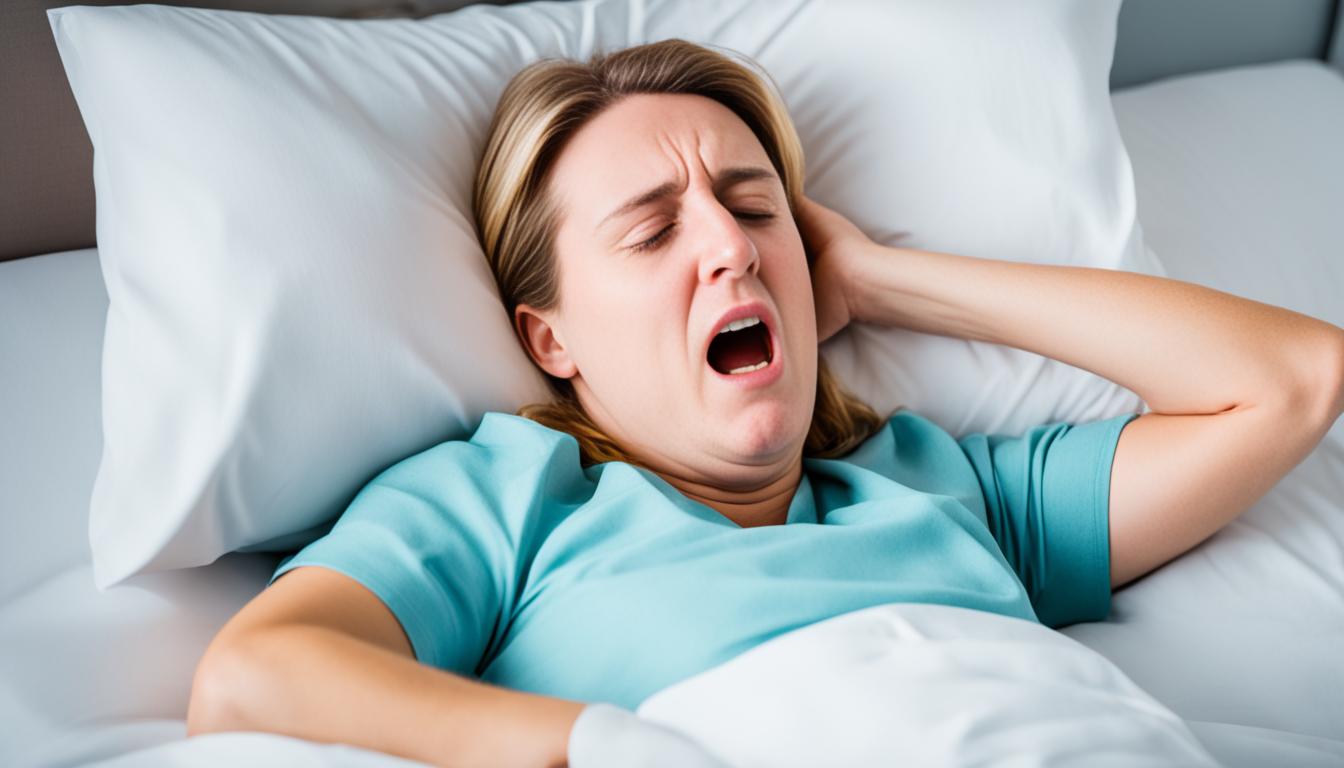Mononucleosis is commonly known as mono. It’s caused by the Epstein-Barr virus (EBV). This virus leads to symptoms like fever, enlarged lymph nodes, and a sore throat. You can get mono by sharing saliva, such as through kissing or sharing utensils. Many people catch it at some point in their life.
Symptoms show up 4 to 6 weeks after getting the virus. They can last for weeks. Doctors use clinical symptoms and blood tests to diagnose it. Although there’s no cure for mono, resting and staying hydrated are key. Over-the-counter pain relievers help too. In rare cases, serious issues like splenic rupture or nerve problems can happen.
Today, scientists are looking at using stem cell therapy to treat mono. But, we still need more research to know if it works.
Key Takeaways:
- Mono is caused by the Epstein-Barr virus (EBV).
- Its symptoms include fever, swollen lymph nodes, and a sore throat.
- It spreads through close contact, like kissing. Or by sharing utensils.
- Doctors diagnose mono with clinical symptoms and blood tests.
- Supportive care is the main treatment, which includes rest and staying hydrated.
Symptoms of Mono (Mononucleosis)
Mono, or infectious mononucleosis, has key symptoms to watch for. Recognizing these signs early and getting medical advice is important.
Fever: A high temperature and fever are common with mono. It’s how your body fights off the Epstein-Barr virus (EBV).
Sore Throat: Mono often starts with a really sore throat. Your throat can get red, inflamed, and make talking or swallowing tough for a while.
Fatigue: Extreme tiredness and a lack of energy are big parts of mono. They can make it hard to do your daily tasks.
Swollen Glands: Mono may make your neck glands swell. This swelling can be sore and limit how much you can move your head.
Rash: Some people with mono get a rash. It might look like red spots or bigger patches, but not everyone will have this symptom.
Enlarged Spleen: Sometimes, mono can make your spleen bigger. A bigger spleen can lead to pain in the stomach area.
Enlarged Liver: Your liver could also get bigger with mono. This may cause discomfort in your belly’s upper right part.
Symptom Variability
How bad and how long mono symptoms last depends. For some, symptoms go away in a few weeks, but for others, they can last much longer.
Not showing symptoms is possible too, even if you have EBV. Good hygiene is key to stopping the virus’ spread.
| Symptoms | Common Manifestations |
|---|---|
| Fever | High body temperature |
| Sore Throat | Inflamed and painful throat |
| Fatigue | Extreme tiredness and lack of energy |
| Swollen Glands | Tender and enlarged glands in the neck |
| Rash | Possibility of a rash, but not always present |
| Enlarged Spleen | Possible abdominal discomfort or pain |
| Enlarged Liver | Discomfort in the upper right side of the abdomen |
Causes and Transmission of Mono (Mononucleosis)
Mono comes from the Epstein-Barr virus (EBV), a type of herpesvirus. You can get it by being close to someone who’s infected.
EBV often spreads through saliva. This is why people call it the “kissing disease.” You might also get it by sharing food, drinks, or touching infected saliva.
But, you can also catch it through blood transfusions or organ transplants. This shows the virus can live outside the body and infect others through bodily fluids.
If someone gets the Epstein-Barr virus, it might not always make them sick right away. It can stay quiet for a long time. But, it can become active again when someone’s too stressed or their immune system is weak. This is when symptoms can come back.
Preventing the Transmission of Mono
To avoid getting mono, it’s important to keep clean and limit close contact with those who have it. Stay away from kissing or sharing items with infected people.
Wash your hands well and often. This helps a lot. If soap and water are not around, use hand sanitizers as a backup.
By being careful about hygiene and keeping your distance, the chances of getting EBV are lower. This also means your risk of getting mono is less.
Transmission Modes of Mono
| Transmission Modes | Description |
|---|---|
| Saliva Exchange | Kissing or sharing utensils or drinks with infected individuals |
| Close Contact | Being in proximity to someone who has mono |
| Bodily Fluids | Transmission through blood transfusions or organ transplants |
Diagnosis and Treatment of Mono (Mononucleosis)
Diagnosing mono looks at the symptoms and blood tests. The tests find antibodies that your body makes when you have the Epstein-Barr virus (EBV). They help figure out if someone has mono and not something else. While there’s no direct medicine for mono, supportive care is usually enough.
Treatment for mono focuses on rest, drinking plenty of fluids, and taking pain relievers. These help lower symptoms like a high fever and a sore throat. Rest lets your body recover and fight the virus. It’s also important to drink enough water for your health. Pain relievers you can buy without a prescription can make you feel better and lower the fever. It’s very important to stay away from hard physical activities and sports to avoid serious problems like a torn spleen.
If someone has mono complications or the sickness lasts a long time, they might need to go to the hospital. Here, doctors and nurses will give special care. But for most people with mono, getting plenty of rest is the best way to get better.

